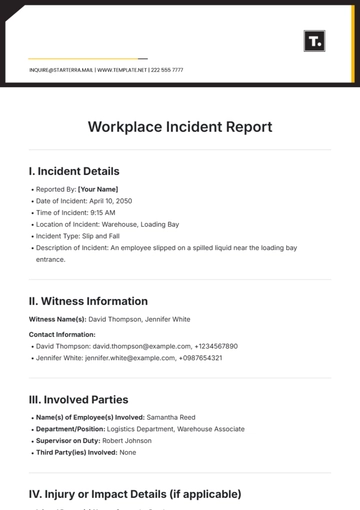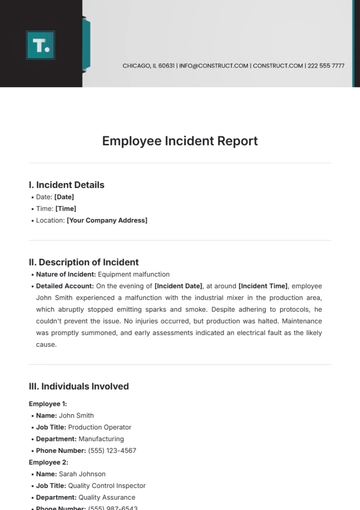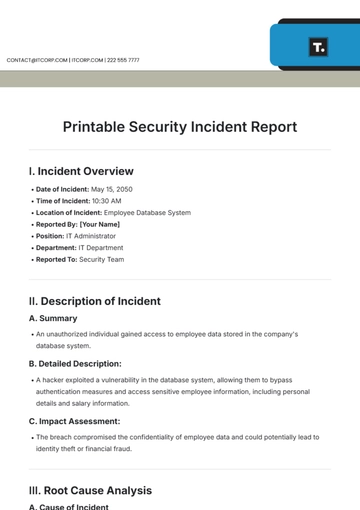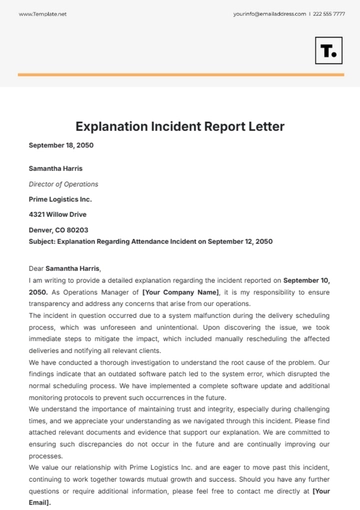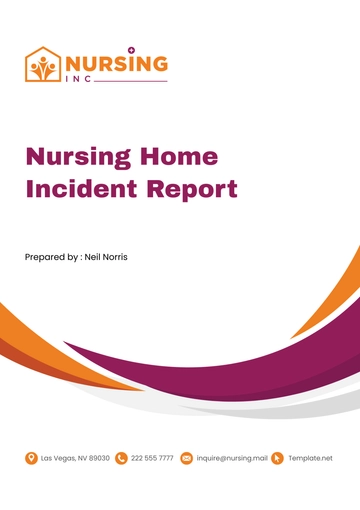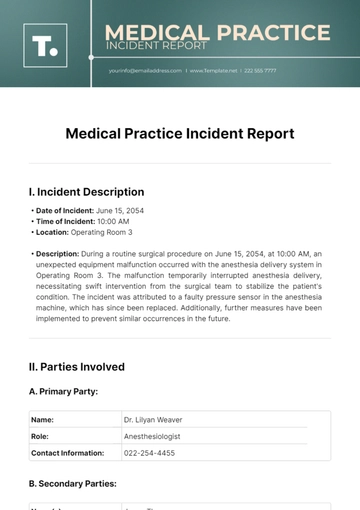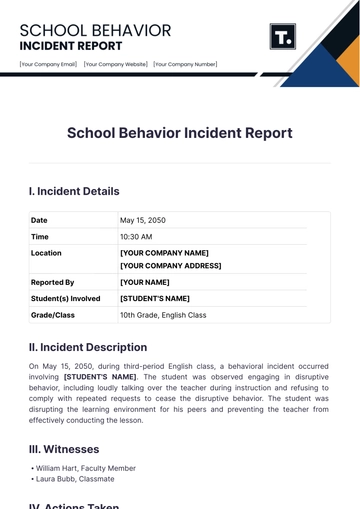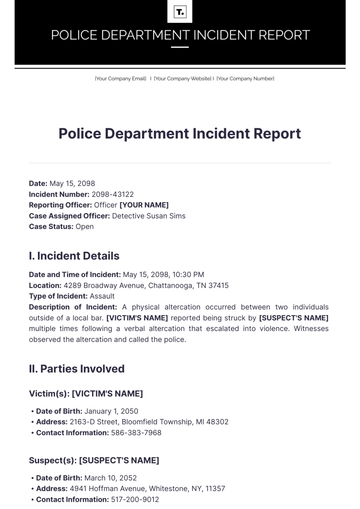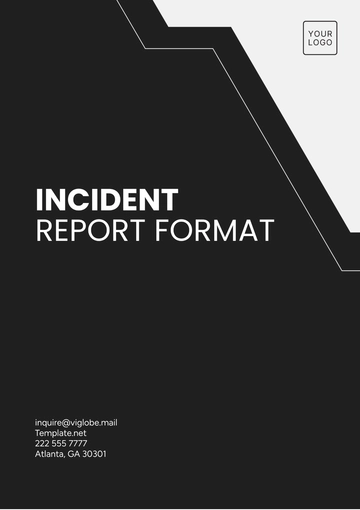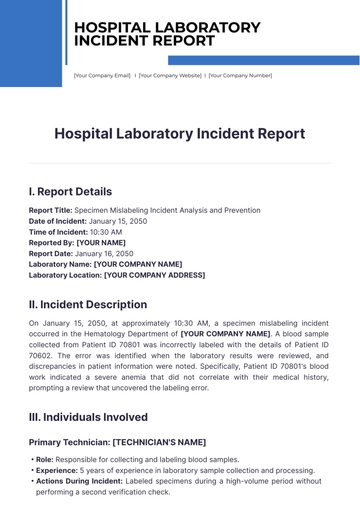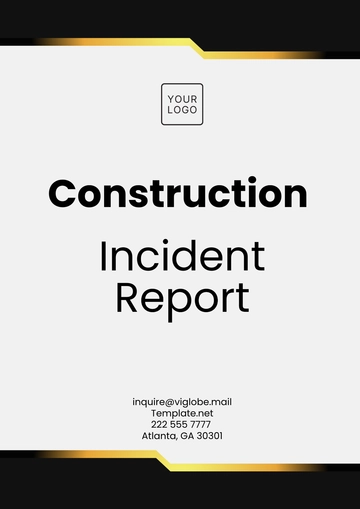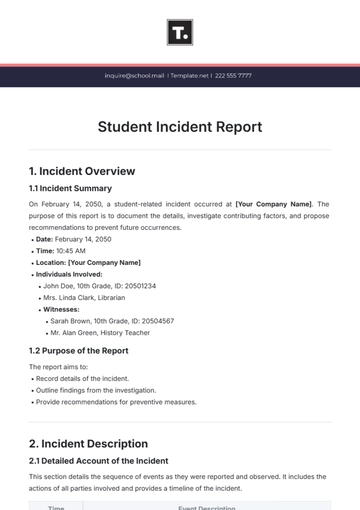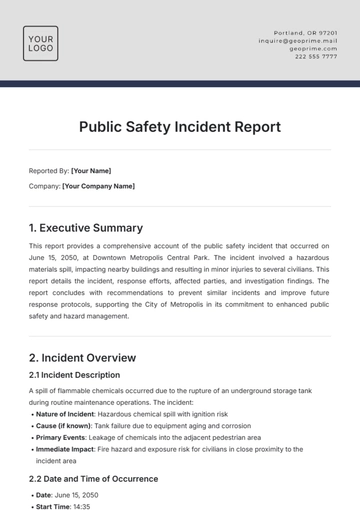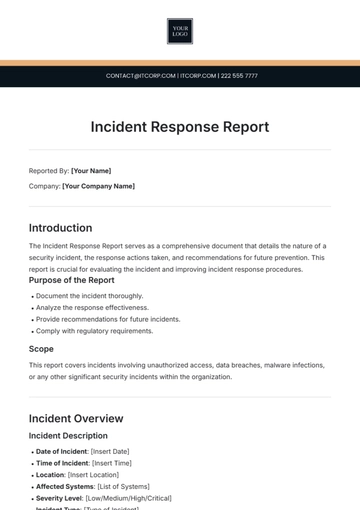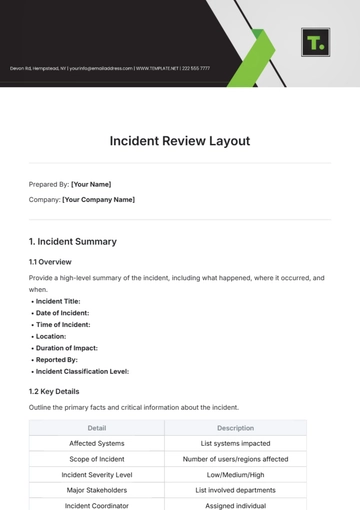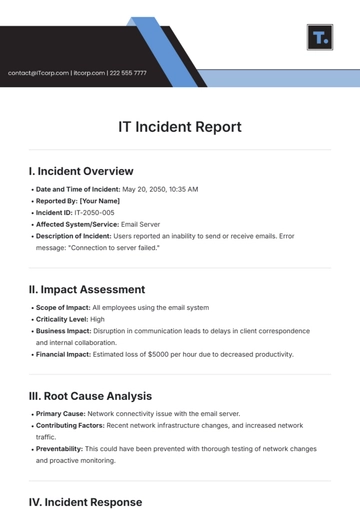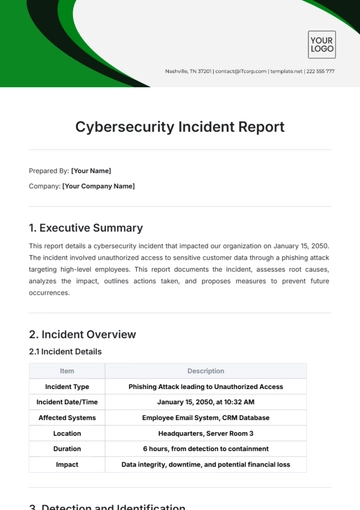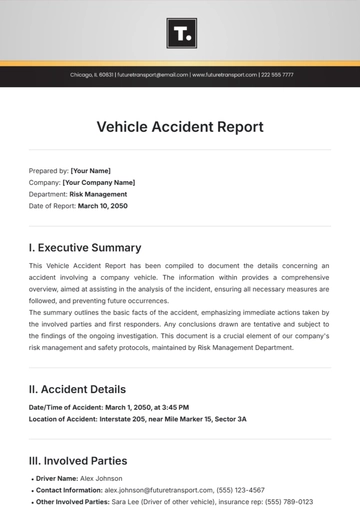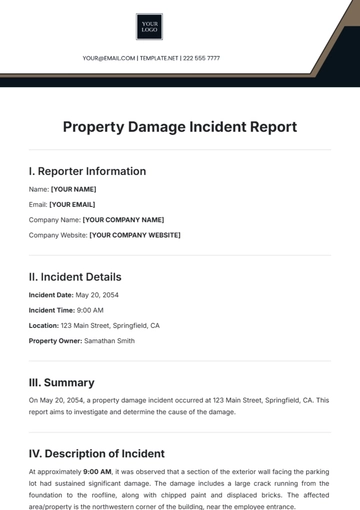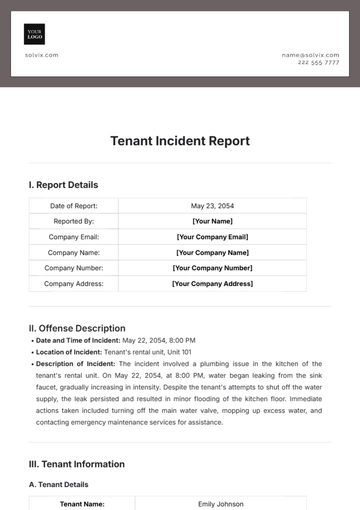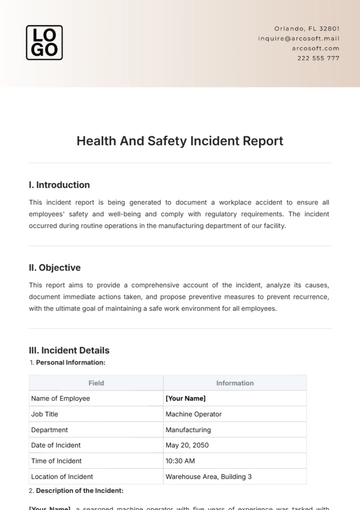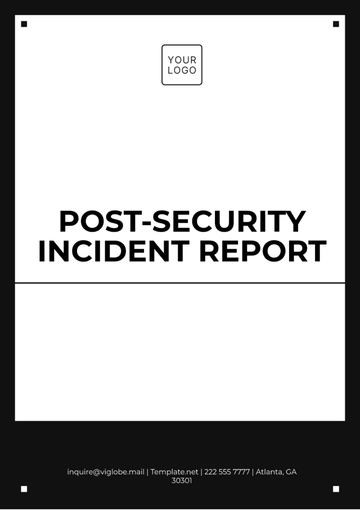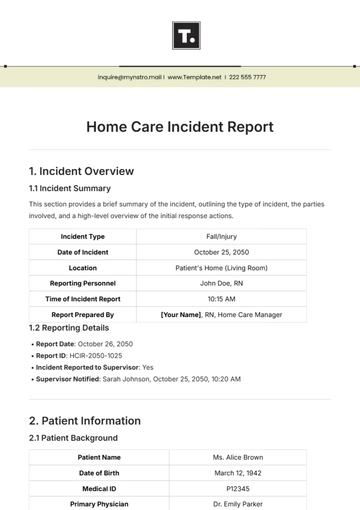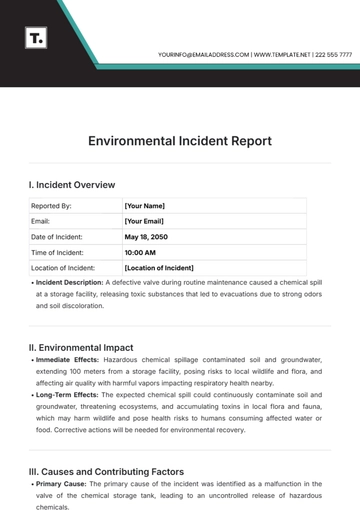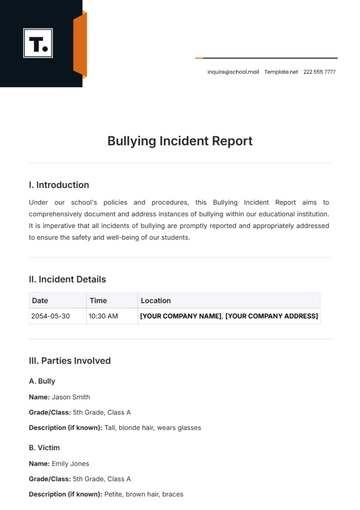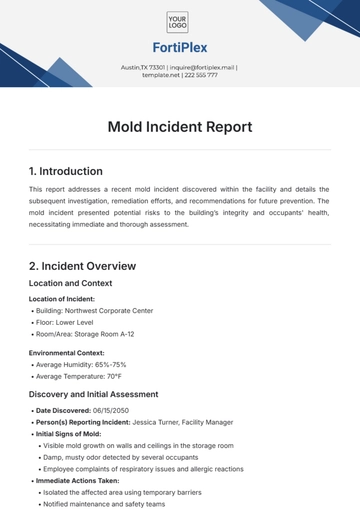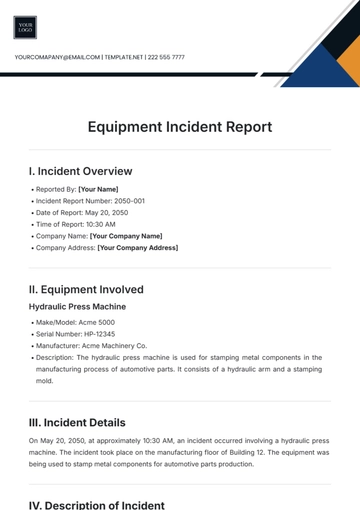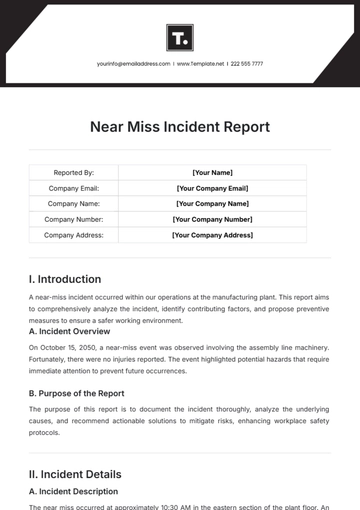Threat Intelligence Report
Company: | [YOUR COMPANY NAME] |
Prepared by: | [YOUR NAME] | Department: | [YOUR DEPARTMENT] |
I. Introduction
The [YOUR COMPANY NAME] Threat Intelligence Report aims to provide a comprehensive analysis of potential cybersecurity threats and vulnerabilities affecting the organization. This report serves as a valuable resource for [YOUR DEPARTMENT] to understand emerging threats, assess risks, and implement proactive measures to enhance cybersecurity posture. By examining threat intelligence data and trends, stakeholders can make informed decisions to safeguard critical assets and mitigate potential risks.
II. Threat Identification
The Threat Identification section focuses on identifying potential threats and vulnerabilities that pose risks to [YOUR COMPANY NAME]'s systems and data. Key areas of focus include:
III. Methodology
The Methodology section outlines the approach and techniques used to gather and analyze threat intelligence data. It includes:
Data Collection:
Gathering threat intelligence from various sources, including internal security systems, threat feeds, and open-source intelligence (OSINT).
Analyzing threat indicators such as IP addresses, domain names, and file hashes.
IV. Findings
The Findings section presents the results of the threat intelligence analysis conducted during the reporting period. Key findings include:
Emerging Threat Trends:
Identification of emerging threats and attack vectors observed in the cybersecurity landscape.
Analysis of threat actor tactics, techniques, and procedures (TTPs).
V. Threat Analysis
The Threat Analysis section provides a detailed examination of specific threats identified in the findings. It includes:
Threat Profiles:
Profiles of known threat actors and cybercriminal groups targeting the organization.
Analysis of their motivations, capabilities, and tactics.
VI. Security Recommendations
Based on the findings and threat analysis, the Security Recommendations section provides actionable recommendations to mitigate identified threats and vulnerabilities. Recommendations include:
VII. Conclusion
In conclusion, the [YOUR COMPANY NAME] Threat Intelligence Report highlights the importance of proactive threat identification and mitigation in maintaining a robust cybersecurity posture. By leveraging threat intelligence insights and implementing security recommendations, [YOUR COMPANY NAME] can effectively mitigate risks and protect its assets against evolving cybersecurity threats. Continued vigilance and collaboration across departments are essential to maintaining resilience in the face of emerging threats.
Report Templates @ Template.net

